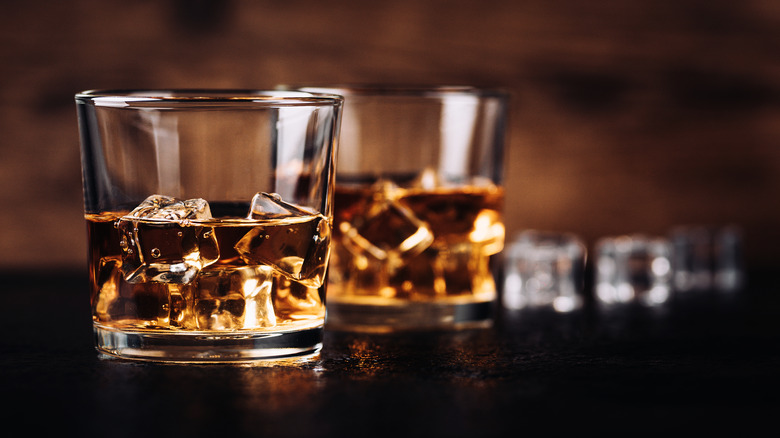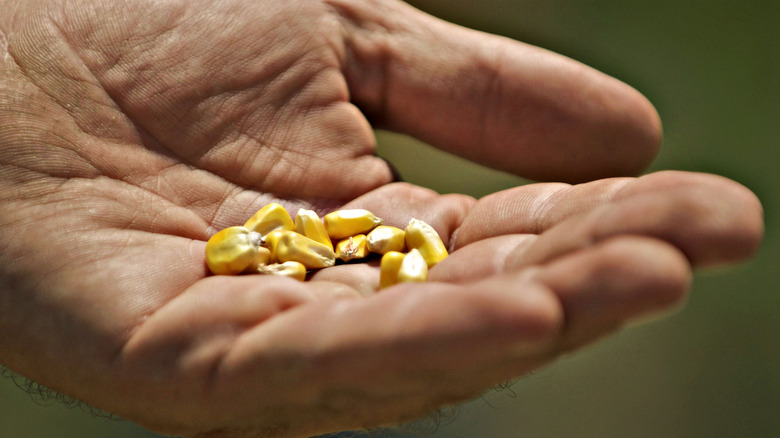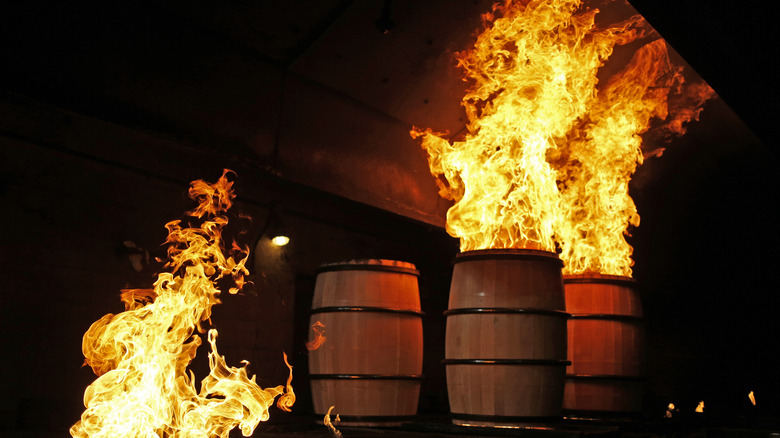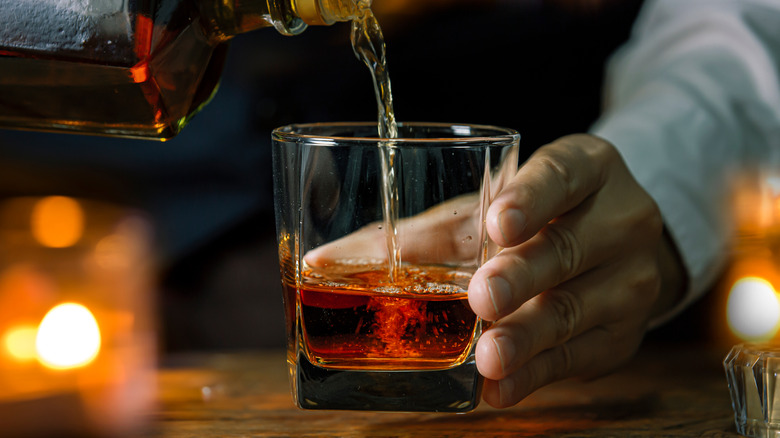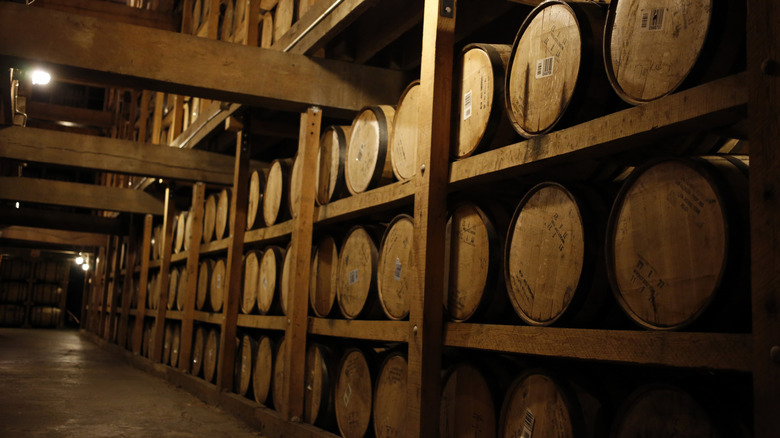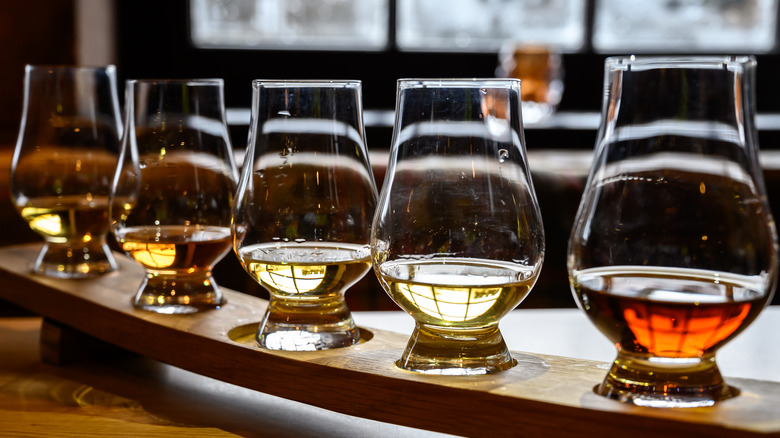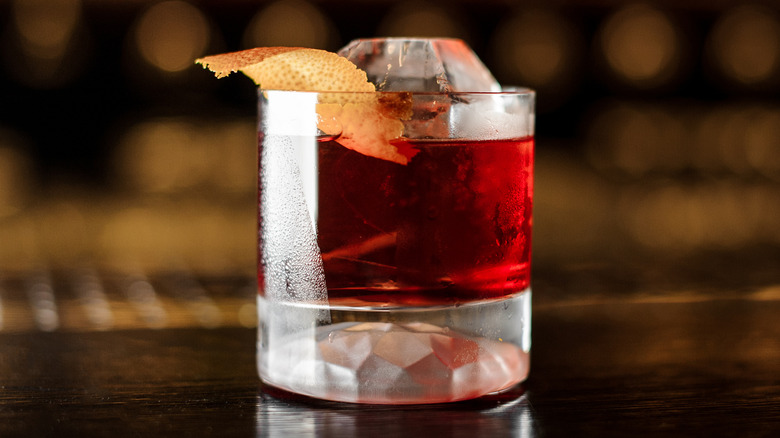Is Bourbon Actually Any Different Than Whiskey?
Whether you're a casual bourbon drinker or a dedicated fan, chances are you've noticed the amber-colored liquor is rather similar to whiskey. Those who have had the opportunity to tour a bourbon distillery have also likely heard the guide say something along the lines of, "all bourbon is whiskey, but not all whiskey is bourbon." More simply put, bourbon is just a more niche category of whiskey.
The three biggest factors that separate bourbon from other whiskies like Scotch or Irish whiskey is the primary grain it is made from, how it is aged, and the proof or percent alcohol by volume at which it is bottled. There are of course other differences too, such as the aromas and notes you get from bourbon. Thanks to the guidelines that are enforced for distilleries to be able to call their product bourbon, the differences between bourbon and whiskey are actually quite easy to identify and learn.
What is the corn ratio of bourbon?
Generally, bourbon and whiskey both are made using a variety of grains in their mash, including malted barley, rye, wheat, and corn. Bourbon Country shares that to be considered authentic bourbon, the mix must contain corn; whiskey, on the other hand, doesn't make the same demand (via The Whiskey Wash). By manipulating the amounts of each grain that are used in the mash, the base notes and aromas can be enhanced or minimized before taking on more flavor in the barrels.
Bourbon made in the United States must meet a minimum standard of 51% corn in their grain blend. Anything beyond or in addition to that is the distiller's choice, though most bourbons tend to use more corn — between 65% to 75%, says Distiller. The Whiskey Wash reports that, while many believe corn plays a part in bourbon's sweetness, no sugar actually survives the distillation process. Instead, the almost-tasteless corn allows the flavors from the barrel and other "flavoring grains" in the mash (like rye and wheat) to stand out more prominently.
What kind of barrels are used for bourbon?
The type of barrels, and the amount of char or burning they have on the inside, is another huge component for the flavor and aroma that a whiskey will have. Another regulation that bourbon carries, according to Distiller, is the type of barrel that it is aged in. To be called bourbon, the distilled spirit must be aged in nothing but brand new oak barrels. That means the barrel cannot have held any other spirit or wine prior to being used for the bourbon. The oak barrels introduce more complexity, as well as sweeter notes and aromas to bourbon. like vanilla (via The Whiskey Wash).
Though the barrel has to be new and it has to be oak for your spirit to be called bourbon, there is one component that distillers can alter to change the outcome of their bourbon — the char, or the degree to which the inside of the barrel is torched. VinePair explains bourbons are classified by a number (with most falling between one and four), as some bourbons are aged in barrels will have a very mild or light char, while others are placed in heavily charred barrels. The more charred the barrel, the spicier the bourbon's flavor will be.
What are the ABV requirements for bourbon?
Like other spirits, bourbon must reach a specific level of alcohol by volume (or ABV) to officially be labeled bourbon (via Food & Wine). When it comes to bourbon, the mash cannot go over 160 proof (or 80% ABV) before it is aged, and must be reduced to a maximum of 125 proof (or 62.5% ABV) in the barrel before being bottled. Long Road Distillers says this cap protects the integrity of bourbon's flavor, among other things.
Though bourbon's ABV cannot be above 62.5% when it is bottled, it can come down further. Ultimately, the spirit can be no less than 40% ABV, says Bourbon Country. This isn't necessarily a bad thing, however, as Whisky Advocate shares that some bourbon's flavor profiles benefit from the lower proof. Eddie Russell, who was the master distiller at Wild Turkey in 2017, explained to the outlet that lower ABV bourbons can also be more approachable to some drinkers than their maxed out brethren.
Where does bourbon have to come from?
One common misconception is that bourbon has to be made in Kentucky. While this notion probably stems from the production of other alcoholic drinks like Champagne, where the product must be made in a specific location to be called or certified that drink, this isn't so for bourbon. Food & Wine explains that this association with Kentucky is more likely due to the fact that a large percentage of bourbon is, and has been for many years, made in Bourbon County, Kentucky. That's also (obviously) where the name comes from.
Bourbon is ultimately an American version of whiskey, however, and can be made anywhere in the United States so long as it follows the stringent guidelines imposed — such as using corn for the majority of the mash, staying between the ABV minimum and maximum, and being aged in new oak barrels, as mentioned above.
How does bourbon taste compared to other whiskies?
Bourbon is characteristically sweeter than most other whiskey, even though it does usually have hints of spice and smoke due to the charring of the barrels (via Invaluable). The more corn that is used in the bourbon mash, the sweeter the overall spirit will likely be. Apart from smoke and sweet notes, there are other more complex flavors and aromas that can be recognized by an experienced taster. Since the barrels are always oak, vanilla is a common note, says VinePair; the charred oak often brings caramel or toffee to mind as well. Sometimes bourbon might even favor spices like cinnamon (via Bourbon Country).
Other whiskies, like Scotch, are in general far less sweet. Instead, these types of whiskey tend to favor more earthy flavors like leather or wood, says Taste of Home. Different grain ratios in the mash will also provide different flavor profiles. The Whiskey Wash explains that whiskeys made with unmalted barley, for example, tend to be lightly sour, while those made with more rye in their mash will be peppery and dry.
What types of drinks for each?
Bourbon and whiskey are both used rather interchangeably in many cocktails. Bourbon will likely make the drink taste sweeter, though most cocktails include other ingredients that balance the flavors anyway. The whiskey sour, old-fashioned, mint julep, hot toddy, and Manhattan cocktails are all very classic whiskey drinks that can easily be made with bourbon.
Other drinks, however, inherently favor a specific spirit: An Irish coffee, for example, is (naturally) more often made with Irish whiskey than it is bourbon. The boulevardier, which is similar to a Negroni, tends to be made with bourbon to ensure the drink is properly balanced (via Liquor). The paper plane cocktail is another typical bourbon drink, though it is a rather recent invention. The Sazerac, on the other hand, is best when made specifically with rye.
